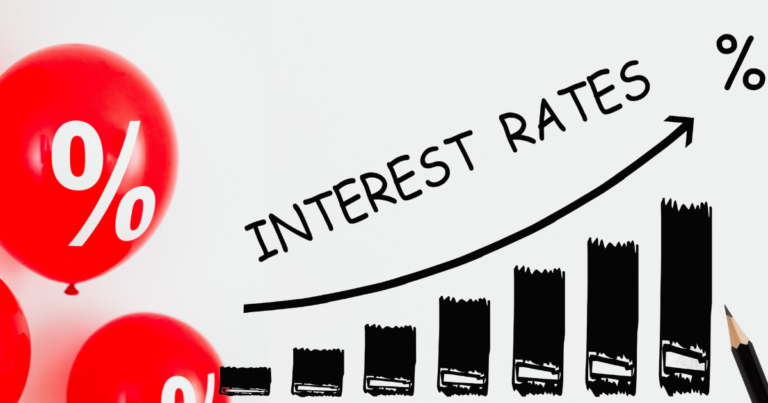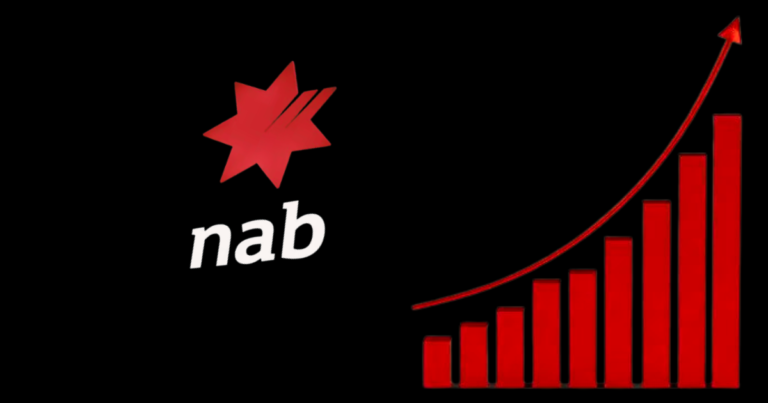Major Stock Market Indexes Throughout the Globe
Stock market indexes use a weighted average of chosen stocks to calculate the worth of a country’s stock market segment. These indices assist investors and analysts in describing the market and comparing various assets.

What is a stock market index?
A market index is a fictitious inventory of investment holdings that reflects a particular area of the financial market. The index value is calculated using the importance of the underlying assets. Some indices’ values are determined by market capitalization, revenue weighting, float weighting, and fundamental weighting. Weighting is a technique for modifying the personal contribution of index elements.
Investors use several market indices to forecast market changes. The Dow Jones Industrial Average (DJIA), the S & P 500 Index, and the Nasdaq Composite Index are the three major stock indexes for measuring the performance of the U.S. market. The Aggregate Bond Index is one of the most popular proxies for U.S. bonds. Because investors cannot directly invest in an index, these portfolios are utilized as benchmarks or to construct index funds.
Stock Market Indexes
Numerous index and exchange-traded funds (ETFs) aim to mimic these indices to provide investors with market exposure.
The three most popular forms of the index are as follows:
- Global stock indexes
- Regional stock indices
- National stock indices
Understand further about global stock indices, regional stock indices, and national stock indices, as well as some critical considerations if you’re an investor trying to obtain exposure through these indexes.
Global Stock Indices
Global stock market indices follow global equity indices. For example, the MSCI World Index monitors big and mid-cap shares in 23 industrialized nations, accounting for around 85 per cent of each country’s free float-adjusted market capitalization. It should be noted that global stock market indices weighted by market size do not provide exposure to developing or frontier markets since they are too tiny to be included.
In addition to the MSCI, many of the most famous international stock market indices are:
- FTSE All-World Index – Total return of 679.96
- S&P Global 100 Index-Total return of 5,012.50
- S&P Global 1200 Index-Total return of 5,108.80
- Dow Jones Global Titans 50-Total return of 905.35
Regional Stock Indices
Regional stock market indices track stocks from different parts of the world. These indices may, for example, encompass Asian, European, or Latin American stocks. They assist investors and analysts in comparing the performance of certain nations to that of a larger area to identify which assets are outperforming and underperforming. These index funds may also be helpful in increasing exposure to specific regions around the world.
The following are some of the most prominent regional stock market indices.
Asia
- S&P Asia 50 Index-Total return of 9,333.97
- Dow Jones Asian Titans 50 Index-Total return of 182.43
- FTSE ASEAN 40 Index-Total return of 9,351.29
Europe
- Euro STOXX 50 Index-Total return of 8,055.32
- FTSE Euro 100 Index-Total return of 7,274.17
- S&P Europe 350 Index-Total return 3,700.28
Latin America
- S&P Latin America 40 Index-Total return of 4,907.76
National Stock Indices
National stock market indices offer exposure to certain nations. In certain situations, these indexes’ shares will be exclusively made up of large-cap firms, akin to the Dow Jones Industrial Average in the United States. In other circumstances, the claims may be classified as small-cap since the nation does not have many significant corporations. This is typically the case in emerging or developing market economies.
The following are some of the most critical global as well as national stock market indices.
China
- SSE Composite Index-Total return 3,301.87
- SZSE Component Index-Total return of 12,556.12
- CSI 300 Index-Total return of 4,283.80
Japan
- Nikkei 225 Index-Total return of 47,030.67
- TOPIX Index-Total return of 1,946.44
- JPX-Nikkei Index 400-Total return of 17,524.40
Germany
- DAX Performance Index-Total return of 13,261.12
- TecDAX Index-Total return of 2,983.51
- MDAX Index-Total return of 1,246.75
United Kingdom
- FTSE 100 Index-Total return of 7,285.35
- FTSE All-Share Index-Total return of 1,896.21
- FTSE touchmark 100 Index-Total return of 5,893.80
France
- CAC 40 Index-Total return of 6,185.46
- CAC Next 20 Index-Total return of 10,939.67
- CAC Mid 60 Index-Total return of 25,961.48
India
- BSE SENSEX Index-Total return of 55,397.53
- NSE of India Index-Total return of 39,165.45
- Multi Commodity Exchange of India Index-Total return of 1,405.30
Italy
- FTSE MIB Index-Total return of 21,511.00
- FTSE Italia Mid Cap Index-Total return of 39,069.99
- FTSE MIB Index-Total return of 49,387.26
Brazil
- BOVESPA Index-Total return of 98,245.00
- IBrX 100 Index-Total return of 41,916.51
- ITEL Index-Total return of 2,037.42
Canada
- S&P/TSX 60 Index-Total return of 3,563.24
- S&P/TSX Composite Index-Total return of 72,353.74
- S&P/TSX Venture Composite Index-Total return of 606.34
South Korea
- KOSPI Index-Total return of 2,386.85
- KOSDAQ Index-Total return of 790.72
Other indices of the stock market
Other forms of customized stock market indices for certain groups exist. The Dow Jones Islamic Market World and S&P 500 Shariah indexes, for example, are geared toward law-abiding Islamic investors, whereas other indexes cater to goals such as environmental, social, and government (or ESG) investing.
Investors may wish to explore these sorts of indices, which may give exposure to global markets while imposing certain constraints.
- S&P Global BMI Shariah Index-Total return of 279.51
- STOXX Global ESG Leaders Index-Total return of 176.56
Invest in indexes of the stock market
Investors can use mutual funds or exchange-traded funds, which mirror the underlying index, to get exposure to various stock market indices. For example, the iShares MSCI World ETF (URTH) replicates the renowned MSCI World Index and gives us a clue about worldwide stock markets. Investors should evaluate a range of aspects while analyzing mutual funds and ETFs, including the fund’s fee ratios, diversification, and other considerations.
Indices of the US Stock Market
Global stock market indices are significant indicators of global and country-specific economies. The media and investors have the three most widely watched indices in the United States the S&P 500, Dow Jones Industrial Average, and Nasdaq Composite. Besides these indices, the U.S. equity market comprises about 5,000 more.
S&P 500
The Standard & Poor’s 500 Index (abbreviated as the S&P 500) is a stock market index that includes 500 of the largest firms in the United States. Stocks for the index are picked chiefly based on capitalization, although the component committee also considers liquidity, public float, industry categorization, financial soundness, and trading history.
The S & P 500 Index accounts for around 80% of the entire value of the U.S. stock market. On average, the S & P 500 Index is a solid indicator of market activity in the United States. Indexes are often market-or price-weighted. The S&P 500 is a market-weighted (also known as capitalization-weighted) index. As a result, each stock in the index is weighted according to its overall market capitalization. In other words, if the total market capitalization of all 500 S&P 500 companies falls by 10%, the index value drops by 10% as well.
Dow Jones Industrial Average
The Dow Jones Industrial Average (DJIA) is among the world’s oldest, most well-known, and most often used indices. It covers the equity of 30 of the country’s largest and most significant corporations. The Dow Jones Industrial Average is a value-weighted pointer. It was initially calculated by adding the per-share prices of the stocks in the index and splitting the amount by the number of businesses. Unfortunately, calculating the index is no more straightforward. Stock splits, spin-offs, and other events have caused adjustments in the divisor (a series of numbers derived by Dow Jones and used to analyze the level of the DJIA) over the years, making it a very tiny number (less than 0.2).
The DJIA accounts for roughly a quarter of the total value of the U.S. stock market. Yet, a percentage move in the Dow should never be regarded as a guarantee that the overall market has declined by the same percentage. This is due to the price-weighted function of the Dow. The fundamental issue is that a $1 price change of a $120 stock in the indices has a more significant impact on the DJIA than a $1 price change of a $20 stock, even if the more excellent stock may have moved by only 0.8 per cent and the lower-priced stock by 5 per cent.
A movement in the Dow shows the changes in investors’ perceptions of the profits and risks of the index’s big firms. The Dow should never be used to indicate the mood in other parts of the marketplace since the overall attitude toward large-cap companies frequently varies from the stance toward small-cap stocks, overseas equities, or technology stocks.
In summary, the Dow is recognized for ranking among the most significant blue-chip firms in the United States with consistently stable dividends. As a result, while not necessarily representative of the overall market, it can be representative of the blue-chip, dividend-value market.
Other United States indices
There are several different ways of looking at indices in general. Capitalization is frequently essential, with indexes classified as significant-, mid-, or small-cap. The S&P 500 and Dow Jones Industrial Average are two of the crucial large-cap indexes, but others include the S&P 100, Dow Jones U.S. Large-Cap Total Stock Market Index, MSCI USA Large-Cap Index, and Russell 1000.
Mid-cap note indices include the S&P Mid-Cap 400, the Russell Midcap, and the Wilshire US Mid-Cap Index. The Russell 2000 is a small-cap index comprising the 2,000 smallest firms from the Russell 3000. Among the most prominent small-cap indices are the S&P 600, the Dow Jones Small-Cap Growth Total Stock Market Index, and the Dow Jones Small-Cap Value Total Stock Market Index.
Investors frequently turn to sectors, with Standard & Poor dominating this industry. Standard & Poor’s can:
- S&P Communication Services Select Sector (XLC)
- S&P Consumer Discretionary Select Sector (XLY)
- S&P Consumer Staples Select Sector (XLP)
- S&P Energy Select Sector (XLE)
- S&P Financial Select Sector (XLF)
- S&P Health Care Select Sector (XLV)
- S&P Industrial Select Sector (XLI)
- S&P Materials Select Sector (XLB)
- S&P Real Estate Select Sector (XLRE)
- Technology Select Sector (XLK)
- Utilities Select Sector (XLU)
These indices are full sector segregations of the S & P 500. The emergence of bright beta index funds has also contributed to a growth in the number of indices available in the market. Smart beta indices are passively constructed indices that utilise certain qualities or fundamental screenings that aid in increasing the index constitution’s rate.






